|
|
 |
|
NEWSLETTER N° 10 - JANUARY 2021
|
|
|
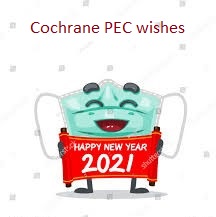
Last year has been particularly difficult for everyone - clinicians, patients and their caregivers. For the first time in over a century, the worl faced a global pandemic. While this has been extremely challenging, it has created opportunities for growth and innovation.
COVID-19 highlighted the importance of emergency care to our communities and healthcare systems. The ability to adapt and respond to an ever evolving situation is exactly what emergency medicine does best. Paramedics, nurses and physicians have been on the front-lines during this worldwide pandemic and we want to thank all of them for their efforts and devotion.
Despite the endless cancellations of medical events and lockdowns as a result of the pandemic, the Cochrane and the Cochrane PEC have continued in their hard work to keep clinicians informed about emerging knowledge and research evidence from around the world related to COVID-19 and other research evidence.
We wish you a happy new non-COVID year!
|
|
|
 |
 |
|
COCHRANE PEC MAJOR CONTRIBUTORS
|
|
|

Above all, we wish to thank and recognize the tremendous work and efforts of caregivers around the world who have been dealing with the pandemic since the beginning of the year.

We would also like to recognize the researchers who are continually working to find new treatments and vaccines during this health crisis in an effort to limit the impact of this emerging disease on the population.
Finally, Cochrane PEC recognizes the tremendous work done by Cochrane members to produce rapid and effective situation-specific Cochrane reviews, always with the same degree of methodologic rigour that characterizes Cochrane. In partnership with the WHO, they have developed several specific collections on the prevention and treatment of COVID-19 infections. These reviews are regularly updated to facilitate patient management for practitioners.

|
|
|
 |
 |
|
|
Sustained versus standard inflations during neonatal resuscitation to prevent mortality and improve respiratory outcomes
Matteo Bruschettini, Colm PF O'Donnell, Peter G Davis, Colin J Morley, Lorenzo Moja, Maria Grazia Calevo
This meta‐analysis of nine studies shows that sustained lung inflation without chest compression was not better than intermittent ventilation for reducing mortality in the delivery room (low‐quality evidence) or during hospitalization (moderate‐quality evidence).There is no evidence to support the use of sustained inflation based on evidence from this review.
Antiplatelets agents for preventing pre-eclampsia and its complications
Lelia Duley, Shireen Meher, Kylie E Hunter, Anna Lene Seidler, Lisa M Askie
Administering low‐dose aspirin to pregnant women led to small‐to‐moderate benefits, including reductions in pre‐eclampsia, preterm birth , the baby being born small‐for‐gestational age and fetal or neonatal death. Aspirin probably slightly increased the risk of postpartum haemorrhage of more than 500 mL. Identifying women who are most likely to respond to low‐dose aspirin would improve targeting of treatment. As almost all the women in this review were recruited to the trials after 12 weeks gestation, it is unclear whether starting treatment before 12 weeks’ would have additional benefits without any increase in adverse effects. While there was some indication that higher doses of aspirin would be more effective, further studies would be warranted to examine this.
Computed tomography for diagnosis of acute appendicitis in adults
Bo Rud, Thomas S Vejborg, Eli D Rappeport, Johannes B Reitsma, Peer Wille‐Jørgensen
The sensitivity and specificity of CT for diagnosing appendicitis in adults are high. Unenhanced standard‐dose CT appears to have lower sensitivity than standard‐dose CT with intravenous, rectal, or oral and intravenous contrast enhancement. Use of different types of contrast enhancement or no enhancement does not appear to affect specificity.
Hypertonic saline versus other intracranial pressure-lowering agents for people with acute traumatic brain injury
Han Chen, Zhi Song, Jane A Dennis
This review identified trials comparing hypertonic saline to mannitol or mannitol in combination with glycerol. Based on limited data, there is weak evidence to suggest that hypertonic saline is no better than mannitol in efficacy and safety in the long‐term management of acute traumatic brain injury. Future research should be comprised of large, multi‐site trials. Trials should investigate issues such as the type of traumatic brain injury suffered by participants and concentration of infusion and length of time over which the infusion is given.
Transcranial doppler sonography for detecting stenosis or occlusion of intracranial arteries in people with acute ischaemic stroke
Alessia Mattioni, Silvia Cenciarelli, Paolo Eusebi, Miriam Brazzelli, Tatiana Mazzoli, Massimo Del Sette, Carlo Gandolfo, Marinella Marinoni, Cinzia Finocchi, Valentina Saia, Stefano Ricci
This review provides evidence that TCD(TransCranial Doppler) or TCCD(TransCranial Colour Doppler), administered by professionals with adequate experience and skills, can provide useful diagnostic information for detecting stenosis or occlusion of intracranial vessels in people with acute ischaemic stroke, or guide the request for more invasive vascular neuroimaging, especially where CT or MR‐based vascular imaging are not immediately available. More studies are needed to confirm or refute the results of this review in a larger sample of stroke patients, to verify the role of contrast medium and to evaluate the clinical advantage of the use of ultrasound.
Oxygen therapy in the pre-hospital setting for acute exacerbations of chronic obstructive pulmonary disease
Zoe Kopsaftis, Kristin V Carson‐Chahhoud, Michael A Austin, Richard Wood‐Baker
The one included study found a reduction in pre/in‐hospital mortality for the titrated oxygen arm compared to the high‐flow control arm. However, the paucity of evidence somewhat limits the reliability of these findings and generalisability to other settings. There is a need for robust, well‐designed RCTs to further investigate the effect of oxygen therapies in the pre‐hospital setting for people with acute exacerbations of chronic obstructive pulmonary disease.
Treatment of distal deep vein thrombosis
George Kirkilesis, Stavros K Kakkos, Colin Bicknell, Safa Salim, Kyriaki Kakavia
This review found a benefit for people with distal DVT treated with anticoagulation therapy using VKA with little or no difference in major bleeding events although there was an increase in clinically relevant non‐major bleeding when compared to no intervention or placebo. The small number of participants in this meta‐analysis and strength of evidence prompts a call for more research regarding the treatment of distal DVT. RCTs comparing different treatments and different treatment periods with placebo or compression therapy, are required.
Corticosteroids as standalone or add-on treatment for sore throat
Simone Cassan, Matthew J Thompson, Rafael Perera, Paul P Glasziou, Chris B Del Mar, Carl J Heneghan, Gail Hayward
Oral or intramuscular corticosteroids, in addition to antibiotics, moderately increased the likelihood of both resolution and improvement of pain in participants with sore throat. Given the limited benefit, further research into the harms and benefits of short courses of steroids is needed to permit informed decision‐making.
Chest ultrasonography versus supine chest radiography for diagnosis of pneumothorax in trauma patients in the emergency department
Kenneth K Chan, Daniel A Joo, Andrew D McRae, Yemisi Takwoingi, Zahra A Premji, Eddy Lang, Abel Wakai
The diagnostic accuracy of CUS performed by frontline non‐radiologist physicians for the diagnosis of pneumothorax in ED trauma patients is superior to supine CXR, independent of the type of trauma, type of CUS operator, or type of CUS probe used. These findings suggest that CUS for the diagnosis of traumatic pneumothorax could be incorporated into trauma protocols and algorithms in future medical training programmes. In addition, CUS may beneficially change routine management of trauma
Oral non-steroidal anti-inflammatory drugs versus other oral analgesic agents for acute soft tissue injury
Peter Jones, Rain Lamdin, Stuart R Dalziel
Compared with paracetamol, NSAIDs make no difference to pain at one to two hours and at two to three days, and may make no difference at day seven or beyond. NSAIDs may result in a small increase in gastrointestinal adverse events and may make no difference in neurological adverse events compared with paracetamol. Compared with opioids, NSAIDs probably make no difference to pain at one hour, and may make no difference at days four or seven. NSAIDs probably result in fewer gastrointestinal and neurological adverse effects compared with opioids. We note a very low‐certainty evidence for all outcomes. The current evidence should not be extrapolated to adults older than 65 years, as this group was not well represented in the studies.
|
|
|
 |
 |
|
|
Quarantine alone or in combination with other public health measures to control COVID -19 : a rapid review
Barbara Nussbaumer-Streit, Verena Mayr, Andreea Iulia Dobrescu, Andrea Chapman, Emma Persad, Irma Klerings, Gernot Wagner, Uwe Siebert, Dominic Ledinger, Casey Zachariah, Gerald Gartlehner
The current evidence is limited because most studies on COVID‐19 are mathematical modelling studies that make different assumptions on important model parameters. Findings consistently indicate that quarantine is important in reducing incidence and mortality during the COVID‐19 pandemic, although there is uncertainty over the magnitude of the effect. Early implementation of quarantine and combining quarantine with other public health measures is important to ensure effectiveness. In order to maintain the best possible balance of measures, decision makers must constantly monitor the outbreak and the impact of the measures implemented.
Personal protective equipment for preventing highly infectious diseases due to exposure to contaminated body fluids in healthcare staff
Jos H Verbeek, Blair Rajamaki, Sharea Ijaz, Riitta Sauni, Elaine Toomey, Bronagh Blackwood, Christina Tikka, Jani H Ruotsalainen, F Selcen Kilinc Balci
We found low‐ to very low‐certainty evidence that covering more parts of the body leads to better protection but usually comes at the cost of more difficult donning or doffing and less user comfort. More breathable types of PPE may lead to similar contamination but may have greater user satisfaction. Modifications to PPE design, such as tabs to grab, may decrease the risk of contamination. Face‐to‐face training in PPE use may reduce errors more than folder‐based training.
Barriers and facilitators to healthcare workers’ adherence with infection prevention and control (IPC) guidelines for respiratory infectious diseases: a rapid qualitative evidence synthesis
Catherine Houghton, Pauline Meskell, Hannah Delaney, Mike Smalle, Claire Glenton, Andrew Booth, Xin Hui S Chan, Declan Devane, Linda M Biesty
Healthcare workers point to several factors that influence their ability and willingness to follow IPC guidelines when managing respiratory infectious diseases. These include factors tied to the guideline itself and how it is communicated, support from managers, workplace culture, training, physical space, access to and trust in personal protective equipment, and a desire to deliver good patient care. The review also highlights the importance of including all facility staff, including support staff, when implementing IPC guidelines.
Antibody tests for identification of current and past infection with SARS-CoV-2
Jonathan J Deeks, Jacqueline Dinnes, Yemisi Takwoingi, Clare Davenport, René Spijker, Sian Taylor-Phillips, Ada Adriano, Sophie Beese, Janine Dretzke, Lavinia Ferrante di Ruffano, Isobel M Harris, Malcolm J Price, Sabine Dittrich, Devy Emperador, Lotty Hooft, Mariska MG Leeflang, Ann Van den Bruel, Cochrane COVID-19 Diagnostic Test Accuracy Group
The sensitivity of antibody tests is too low in the first week since symptom onset to have a primary role for the diagnosis of COVID‐19, but they may still have a role complementing other testing in individuals presenting later, when RT‐PCR tests are negative, or are not done. Antibody tests are likely to have a useful role for detecting previous SARS‐CoV‐2 infection if used 15 or more days after the onset of symptoms. However, the duration of antibody rises is currently unknown, and we found very little data beyond 35 days post‐symptom onset. We are therefore uncertain about the utility of these tests for seroprevalence surveys for public health management purposes. Concerns about high risk of bias and applicability make it likely that the accuracy of tests when used in clinical care will be lower than reported in the included studies. Sensitivity has mainly been evaluated in hospitalised patients, so it is unclear whether the tests are able to detect lower antibody levels likely seen with milder and asymptomatic COVID‐19 disease. This is a fast‐moving field and we plan ongoing updates of this living systematic review.
Signs and symptoms to determine if a patient presenting in primary care or hospital outpatient settings has COVID-19 disease
Thomas Struyf, Jonathan J Deeks, Jacqueline Dinnes, Yemisi Takwoingi, Clare Davenport, Mariska MG Leeflang, René Spijker, Lotty Hooft, Devy Emperador, Sabine Dittrich, Julie Domen, Sebastiaan R A Horn, Ann Van den Bruel, Cochrane COVID-19 Diagnostic Test Accuracy Group
The individual signs and symptoms included in this review appear to have very poor diagnostic properties, although this should be interpreted in the context of selection bias and heterogeneity between studies. We also need data on potentially more specific symptoms such as loss of sense of smell. Studies in older adults are especially important.
Convalescent plasma or hyperimmune immunoglobulin for people with COVID-19: a living systematic review
Khai Li Chai,Sarah J Valk, Vanessa Piechotta, Catherine Kimber, Ina Monsef, Carolyn Doree, Erica M Wood, Abigail A Lamikanra, David J Roberts, Zoe McQuilten, Cynthia So-Osman, Lise J Estcourt, Nicole Skoetz
We are uncertain whether convalescent plasma is beneficial for people admitted to hospital with COVID‐19. In the absence of a control group, we are unable to assess the relative safety of convalescent plasma therapy. We will continue to update this review periodically.
Digital contact tracing technologies in epidemics: a rapid review
Andrew Anglemyer, Theresa HM Moore, Lisa Parker, Timothy Chambers, Alice Grady, Kellia Chiu, Matthew Parry, Magdalena Wilczynska, Ella Flemyng, Lisa Bero
The effectiveness of digital solutions is largely unproven as there are very few published data in real‐world outbreak settings. Modelling studies provide low‐certainty evidence of a reduction in secondary cases if digital contact tracing is used together with other public health measures such as self‐isolation. Cohort studies provide very low‐certainty evidence that digital contact tracing may produce more reliable counts of contacts and reduce time to complete contact tracing. Digital solutions may have equity implications for at‐risk populations with poor internet access and poor access to digital technology. Stronger primary research on the effectiveness of contact tracing technologies is needed.
|
|
|
 |
 |
|
COCHRANE PEC CORNERS AND VIDEOS
|
|
|
The Cochrane PEC team selects Cochrane reviews relevant to emergency medicine and publishes them in different formats and languages.
|
EMERGENCIAS
Perlas para urgenciólogos
A Cochrane PEC Corner is regularly published in Spanish in the Journal of Spanish Society of Emergency Medicine EMERGENCIAS.
|
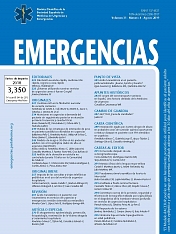 |
|
MEDITERRANEAN JOURNAL OF EMERGENCY MEDICINE
The Cochrane PEC also publishes a Cochrane PEC Corner in English in the Mediterranean Journal of Emergency Medicine.
|
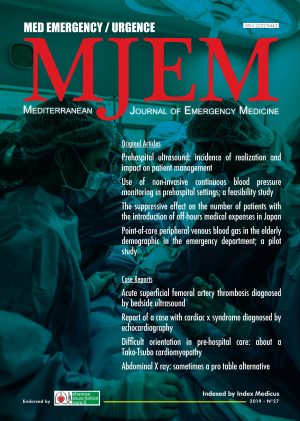 |
|
ANNALES FRANCAISES DE MEDECINE D'URGENCE
Cochrane PEC PEARLS are also regularly published in French in the Journal of the French Society of Emergency Medicine AFMU
|
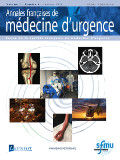
|
The Cochrane PEC also produces videos summarizing in French some Cochrane emergency reviews. They are available on the Cochrane PEC website and on Daily Motion.
|
|
|
 |
 |
|
PUBLICATIONS OF THE COCHRANE PEC
|
|
|
A poster from the Cochrane PEC showing how this group contribu tes to Cochrane review dissemination has been accepted at the Cochrane Colloquium Toronto 2020 that was unfortunately cancelled. However, the abstract has been recently published. tes to Cochrane review dissemination has been accepted at the Cochrane Colloquium Toronto 2020 that was unfortunately cancelled. However, the abstract has been recently published.
From systematic review to knowledge translation in emergency medicine: contribution of the Cochrane Pre-hospital and Emergency Care field
Lvovschi VE, Meyran D, Magee K, Dumouchel J, Auffret Y, Nekhili N, Beroud S, Yordanov Y, Miroux P, Trinh-duc A, Jabre P
Advances in Evidence Synthesis: special issue. Cochrane Database of Systematic Reviews 2020;(9 Suppl 1):6.https://doi.org/10.1002/14651858.CD202001
This knowledge translation work was also presented at the EUSEM 2020 virtual meeting.
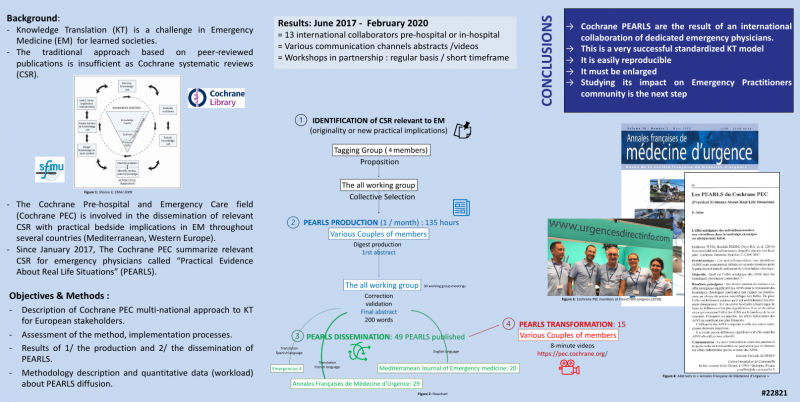
A member of the Cochrane PEC, Daniel Meyran, also published an interesting meta-analysis :
Stroke Recognition for First Aid Providers: A Systematic Review and Meta-Analysis
Meyran D, Cassan P, Avau B, et al. (November 08, 2020) Stroke Recognition for First Aid Providers: A Systematic Review and Meta-Analysis. Cureus 12(11): e11386. doi:10.7759/cureus.11386
|
|
|
 |
 |
|
|
| |
|
Urgences 2020
15-16-17 October 2020
Paris, France
|
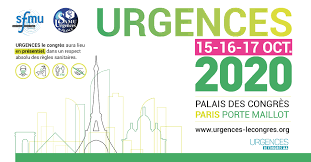 |
EUSEM
19-23 September 2020
Copenhagen, Danmark
|
 |
| |
|
|
|
|
 |
 |
|
|
Cochrane PEC will be present at :
|
|
|
 |
 |
|
|
The Cochrane PEC is delighted with the return of Dr. Yannick Auffret to the team after a year oversea.

The PEC field is proud to announce that one of its active contributors has recently obtained her PHD in June: Doctor of Philosophy in Clinical research, Technological innovation, and Health policy.
Congratulations Virginie Lvovschi.
 Like their predecessors, the new co-chairs of the Cochrane Fields Executive, Kathryn Mahan (Coordinator of Cochrane Neurological Sciences) and Patricia Jabre (Director of Cochrane Pre-hospital and Emergency Care), will support all Fields’ members in the activities that suits their dual accountability to Cochrane and their funders. The new co-chairs will also work closely with the Cochrane Knowledge Translation Department. They will serve Cochrane in its mission to support the production of trusted and timely synthesized evidence, making it accessible and advocating for its use. Like their predecessors, the new co-chairs of the Cochrane Fields Executive, Kathryn Mahan (Coordinator of Cochrane Neurological Sciences) and Patricia Jabre (Director of Cochrane Pre-hospital and Emergency Care), will support all Fields’ members in the activities that suits their dual accountability to Cochrane and their funders. The new co-chairs will also work closely with the Cochrane Knowledge Translation Department. They will serve Cochrane in its mission to support the production of trusted and timely synthesized evidence, making it accessible and advocating for its use.
The PEC Field congratulates its active contributor S.Beroud for the birth of his newborn.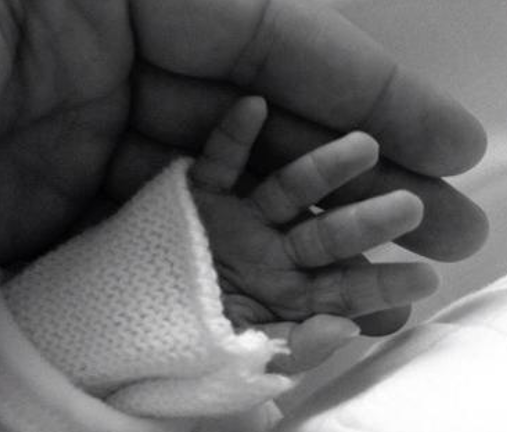
|
|
|
 |
 |
|
|
 |
 |
|
|
 |
 |
|
|
|